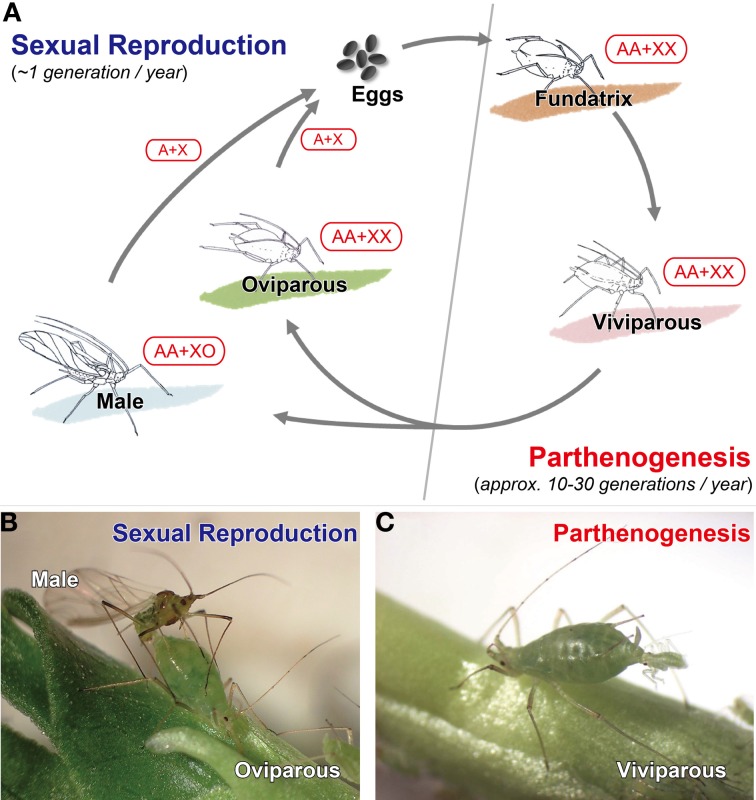Figure 1.
Typical annual life-cycle of aphids. (A) Schematic diagram of a typical holocyclic life cycle of aphids, (B) sexual individuals (male and oviparous female) of Acyrthosiphon pisum, (C) viviparous female of A. pisum. Aphids reproduce by thelytokous parthenogenesis in spring and summer under conditions of long day length and high temperatures. In aphids with a holocyclic life cycle, males and oviparous (sexual) females appear in late autumn and produce fertilized eggs for overwintering. Aphids employ the XO sex-determination system. Therefore, viviparous and oviparous females possess two X chromosomes, while males possess only one X chromosome. Males are produced parthenogenetically with the random loss of one X chromosome during the maturation division. Although oviparous females and males produce haploid oocytes and sperm, respectively, by reductive meiosis, only sperm possessing an X chromosome are viable (sperm lacking an X chromosome are degenerate). Therefore, the next generation, which will hatch as fundatrices in the spring, is entirely female (XX). Viviparous, viviparous parthenogenetic female; Oviparous, oviparous sexual female.

